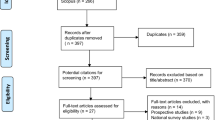Abstract
Objectives: To determine the prevalence of spinal troubles (i.e., neck, upper back and low back pain) in a population of sewage workers, and to establish the effect of sociodemographic, work-related, physical, and psychosocial factors on the reported work disability due to low back pain (LBP) during the previous 12 months. Methods: Data from 255 sewage workers were obtained by standardized questionnaire, structured interview, and standardized physical examination. Data on the prevalence of neck, upper back and low back pain were obtained with the use of the Nordic Questionnaire. The level of disability was assessed from a modified Low-Back Outcome Scale. Work history included physical factors and job perception based on a modified Work APGAR Score. Other questionnaires recorded the psychosocial aspects of the work environment. In addition, we compared the risk factors between sewage workers who had been prevented from doing their normal work, at any time during the preceding 12 months, as a result of LBP (n=92), and those without any history of work disability during the previous 12 months (n=157). Results: The 12-month prevalence rates of neck, upper back and low back pain were 52.4%, 54.8%, and 72.8%, respectively. The prevalence of spinal troubles increased with age. Work disability during the preceding 12 months due to LBP was significantly positively associated with age, disability, the weekly duration of stooping and lifting 5 years previously and higher abnormal illness-behavior scores (odds ratio between 1.26 and 0.94). Moreover, when adjusted for age, the results showed that the subjects in the work disability group were more likely to report higher pain intensities, decreased participation in sports activities, higher levels of physical impairment, the belief that their LBP was related to the physical demands of their job, and a lack of drive (P < 0.05). Conclusions: This study revealed a high incidence of spinal troubles among sewage workers. In a multidisciplinary approach, we demonstrated that not one factor alone but a combination of sociodemographic, work-related and psychosocial factors have shown associations with work disabilities due to LBP. Additional studies evaluating the relative importance of individual risk factors are warranted.
Similar content being viewed by others
Author information
Authors and Affiliations
Additional information
Received: 12 May 1999 / Accepted: 27 November 1999
Rights and permissions
About this article
Cite this article
Friedrich, M., Cermak, T. & Heiller, I. Spinal troubles in sewage workers: epidemiological data and work disability due to low back pain. Int Arch Occup Environ Health 73, 245–254 (2000). https://doi.org/10.1007/s004200050424
Issue Date:
DOI: https://doi.org/10.1007/s004200050424




